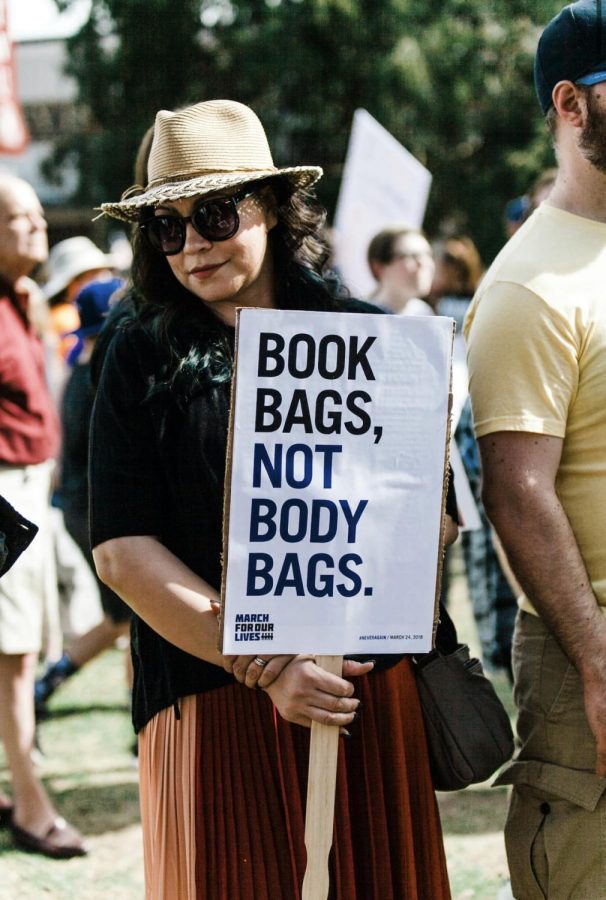Gun Scare Raises Questions About School Security
October 10, 2022
On Wednesday, September 21st, during lunch at Ida B. Wells High School, a person at the Hillsdale food carts pulled a handgun out of his pocket and threatened two students. The students went to the principal who called the police, but he was on hold for twelve minutes. Students did not go on lockdown, and the Portland Police Bureau did not call back until two hours later when they said they didn’t have the resources to send an officer to the site.
Statistically, shootings are less likely to happen in urban and suburban schools than in rural ones. Wells seems to follow this pattern, with few shooting threats occurring in the past few years. But the threat of gun violence is ever present—something we were reminded of by last month’s incident. “On a daily basis, it’s not something I tend to think about a lot,” said Liz Loveless, a junior at Wells. “And then something will happen, and it’s just like, oh my god. It’s like a reminder.”
With this scare so fresh in our minds, it once again raises the question of whether or not we can feel safe in school. The threat of school shootings has always been on the radar, but now, with rates of gun violence higher than ever, it’s critical that we examine our prevention and response plans at school and decide how effective they are and what could be improved.
Currently, our response plan for a shooting is a lockdown. According to Ayesha Coning, Vice Principal at Wells, “all lights are turned off, blinds are closed, doors are locked, students are moved into a part of the classroom that’s furthest away from windows and doors.”
There is some uncertainty about how much this would do to save lives. “I don’t think [teachers] take it seriously enough,” said Corinna Murdock, a junior at Wells. “I was in choir and she made us get in the corner, but a lot of people stayed up in different rooms and she didn’t go and get them. She didn’t do the things she was supposed to do because she knew it was a drill.”
One proposed solution to this problem is to not tell students and teachers it’s a drill. Some feel that it would force students and staff to take every situation seriously, thus better-preparing everyone for a real event. “When both teachers and students don’t know, I feel like that could be better,” said Murdock.
Others think we need a different response plan altogether. “I think it would be easier if it was more accessible for us to get out of that situation easily and safely than for us to just wait for something bad to happen,” said Loveless. “If there was a shooter in the school, I would not want to just crawl under a desk. I would want to climb out the window and I would want to run… I understand why [lockdowns] are the solution, but there are better ones.”
Additionally, the lockdowns are useless if the event occurs outside of class time. “If it’s during one of those times where you don’t have class…oh god, we’re all in trouble,” said Brittney Jenkins, a math teacher at Wells. This is made worse by the fact that the aggressors most likely receive the same training as everyone else. It would be a problem if something were to happen during passing period or lunch, like last month’s scare. “We don’t have a system for that,” said Jenkins.
Whether we keep the lockdowns or not, something needs to change on the national level. School shooting rates nearly quadrupled in the 2021-22 school year compared to the national average since 2013, with 193 last year compared to the usual average of 49. Everytown for Gun Safety recommends the following 10-step program for solving school shootings:
- Enact and Enforce Secure Firearm Storage Laws
- Pass Extreme Risk Laws
- Raise the Age to Purchase Semi-automatic Firearms
- Require Background Checks on All Gun Sales
- Foster a Safe and Trusting School Climate
- Build a Culture of Secure Gun Storage
- Create Evidence-Based Crisis Assessment/Prevention Programs in Schools
- Implement Expert-Endorsed School Security Upgrades: Entry Control and Locks
- Initiate Trauma-Informed Emergency Planning
- Avoid Practices That Can Cause Harm and Traumatize Students
The background checks step in particular has resonated across the nation. Many people feel that a more extensive examination of gun purchasers’ history surrounding mental illness and violence is key to reducing gun-related incidents. “I don’t think the problem was the guns, the problem was the people,” said Coning. Jenkins zeroed in on this point: “I think we need more mental health care, outside school and in school… it should be like the counselors—there’s a social worker per name group.”
With the brutal reminder of gun presence in American schools so fresh in our minds, we need to remember to work together to stop incidents before they happen and refine our response plan. Coning explained that every situation is different. “I would hope that our skills and our training and our learnings from what has happened at other schools informs all of us of how to respond and take care of each other and stay safe if there was an incident.”



